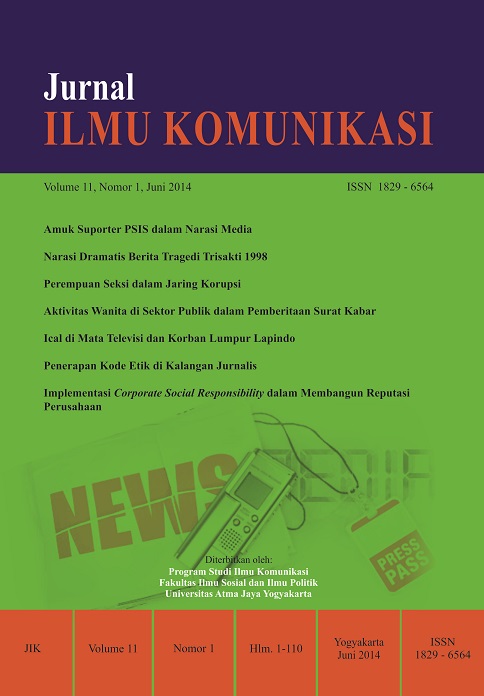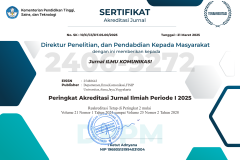Penerapan Kode Etik di Kalangan Jurnalis
DOI:
https://doi.org/10.24002/jik.v11i1.386Abstract
Abstrack: Bribery is a sad phenomenon in Indonesian press. The practice refers to activities of accepting money, goods, vouchers, and other gifts, from a person or an organisation who act as source for journalist. Bribery is often considered as a common practice and institutionalised as a “culture†among media practitioners. The main reasons behind bribery are to maintain relationships or to add journalists’ income, as they are mostly not well paid. However, bribery is against the journalism ethics. It makes journalists professionalism somewhat questionable and threats public life since journalists responsibility in reporting the truth would be affected by such practices.
Abstrak: Praktik suap menjadi salah satu fenomena menyedihkan dalam pers Indonesia. Praktik tersebut merujuk pada aktivitas menerima pemberian berupa uang, barang, voucher dan bentuk lainnya dari pihak narasumber. Praktik suap acapkali dilegalkan dan bahkan menjadi budaya di kalangan pelaku media. Alasan pembenarannya antara lain menjaga hubungan dengan narasumber atau untuk mengatasi masalah kesejahteraan jurnalis yang tidak mendapatkan gaji yang layak. Namun, praktik suap tentu saja bertentangan dengan kode etik jurnalistik. Praktek ini menyebabkan profesionalitas wartawan menjadi dipertanyakan. Praktik suap dapat mengancam kehidupan publik sebab kewajiban jurnalis dalam memberitakan kebenaran akan terpengaruh oleh praktik tersebut.
Downloads
Published
How to Cite
Issue
Section
License
Jurnal ILMU KOMUNIKASI is an academic journal. As such, it is dedicated to the open exchange of information. For this reason, JIK is freely available to individuals and institutions. Authors who publish in Jurnal ILMU KOMUNIKASI will release their articles under the Creative Commons Attribution (BY) License. This license allows anyone to copy and redistribute the article in any medium or format as well as remix, transform, and build upon the material for any purpose, even commercially as long as they credit the authors for the original creation. For details of the rights authors grants users of their work, see the "human-readable summary" of the license, with a link to the full license. (Note that "you" refers to a user, not an author, in the summary)
 This work is licensed under a Creative Commons Attribution 4.0 International License.
This work is licensed under a Creative Commons Attribution 4.0 International License.














